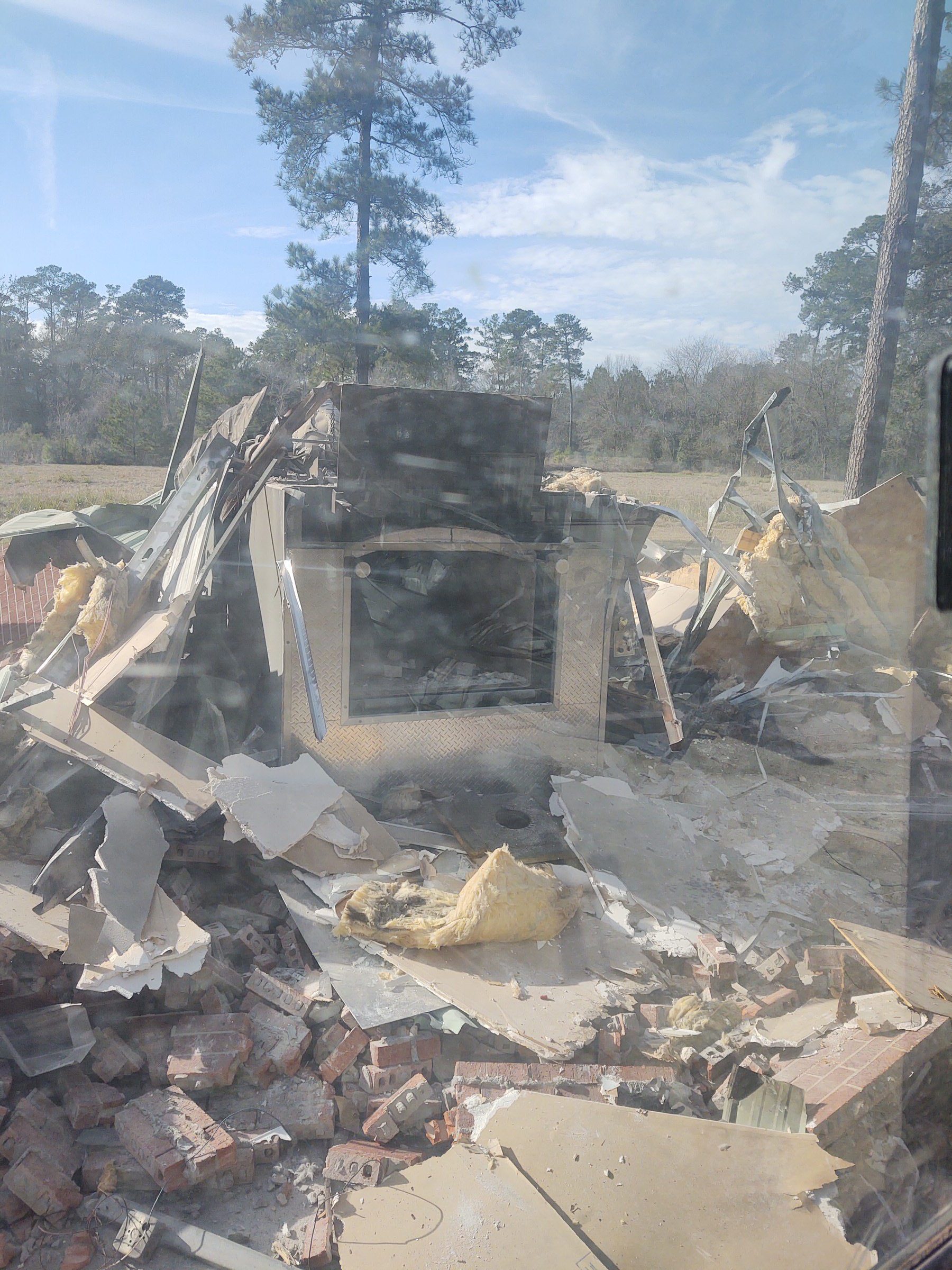Report on the Central Texas Flood: An Analysis of Governmental Response and Implications for Sustainable Development Goals
Executive Summary
A catastrophic flooding event in central Texas has resulted in over 100 fatalities and prompted a high-level federal response, including a presidential visit to the affected region. The disaster and its aftermath have placed the administration’s emergency management policies under intense scrutiny, particularly concerning the operational effectiveness of the Federal Emergency Management Agency (FEMA). This report analyzes the governmental response through the lens of the United Nations Sustainable Development Goals (SDGs), focusing on the implications for building resilient communities (SDG 11), ensuring effective governance (SDG 16), and taking action on climate-related hazards (SDG 13).
Analysis of Disaster Impact and Response
Human and Infrastructure Impact
The rapid-onset flooding overwhelmed entire neighborhoods, leading to a significant loss of life and widespread destruction of property. This event underscores critical vulnerabilities in community infrastructure and public safety, directly impacting several SDGs:
- SDG 3: Good Health and Well-being: The death toll of over 100 individuals represents a severe public health failure in the context of disaster preparedness and response.
- SDG 11: Sustainable Cities and Communities: The inability of existing infrastructure and warning systems to protect residents highlights a pressing need to advance Target 11.5, which aims to significantly reduce the number of deaths and economic losses caused by disasters.
Institutional Response and Governance Challenges (SDG 16)
The effectiveness of governmental institutions has become a central issue in the disaster’s wake. Scrutiny has fallen on the administration’s emergency response frameworks and the capabilities of key agencies.
Key Governance Issues Identified:
- Operational Delays: New spending approval requirements reportedly slowed the deployment of FEMA search-and-rescue teams by more than 72 hours, raising questions about bureaucratic efficiency in a crisis.
- Policy Debate on Federalism: The administration has advocated for downsizing FEMA and shifting primary disaster management responsibility to state and local authorities. This event serves as a critical case study for the viability of such a model.
- Politicization of Disaster Aid: Concerns have been raised regarding perceived disparities in the administration’s response to disasters in different states, potentially undermining the principle of impartial governance. The White House has denied these claims.
- Institutional Capacity: Questions were raised by lawmakers over whether staff reductions at the National Weather Service, a key institution for climate-related early warnings (SDG 13), hampered forecasting and preparedness for the flood.
Alignment with Sustainable Development Goals (SDGs)
Primary SDGs Implicated by the Texas Flooding Event
- SDG 11: Sustainable Cities and Communities
- SDG 13: Climate Action
- SDG 16: Peace, Justice and Strong Institutions
- SDG 17: Partnerships for the Goals
Assessment of Current Response against SDG Targets
- SDG 11 (Sustainable Cities and Communities): The disaster exposed significant gaps in making human settlements inclusive, safe, resilient, and sustainable. The subsequent debate over FEMA’s role is pivotal to shaping future national strategies for disaster risk reduction.
- SDG 16 (Peace, Justice and Strong Institutions): The response has highlighted challenges to building effective, accountable, and inclusive institutions. Reports of operational delays and the political discourse surrounding the response suggest a need to strengthen institutional frameworks to ensure they are resilient, transparent, and apolitical, particularly during national emergencies.
- SDG 13 (Climate Action): The event serves as a stark reminder of the need to strengthen resilience and adaptive capacity to climate-related hazards. The questioning of the National Weather Service’s resources directly relates to Target 13.1 and the importance of robust early warning systems.
- SDG 17 (Partnerships for the Goals): The coordination between federal entities (White House, Homeland Security) and state officials (Governor, Senators) is a central component of the response. However, the proposal to shift responsibility to states necessitates a thorough re-evaluation of this partnership to ensure a cohesive and effective national disaster management strategy.
Analysis of Sustainable Development Goals (SDGs) in the Article
1. Which SDGs are addressed or connected to the issues highlighted in the article?
- SDG 3: Good Health and Well-being
- SDG 11: Sustainable Cities and Communities
- SDG 13: Climate Action
- SDG 16: Peace, Justice and Strong Institutions
2. What specific targets under those SDGs can be identified based on the article’s content?
-
SDG 11: Sustainable Cities and Communities
- Target 11.5: “By 2030, significantly reduce the number of deaths and the number of people affected and substantially decrease the direct economic losses relative to global gross domestic product caused by disasters, including water-related disasters, with a focus on protecting the poor and people in vulnerable situations.”
Explanation: The article directly addresses this target by describing a “catastrophic flood that has killed more than 100 people” and “overwhelmed whole neighborhoods.” The focus on the disaster’s impact on human life and communities is central to the report.
- Target 11.5: “By 2030, significantly reduce the number of deaths and the number of people affected and substantially decrease the direct economic losses relative to global gross domestic product caused by disasters, including water-related disasters, with a focus on protecting the poor and people in vulnerable situations.”
-
SDG 13: Climate Action
- Target 13.1: “Strengthen resilience and adaptive capacity to climate-related hazards and natural disasters in all countries.”
Explanation: The article discusses a natural disaster (“catastrophic flood,” “heavy rains,” “extreme weather events”) and the government’s capacity to respond. The scrutiny of “warning systems and rescue operations” and the debate over FEMA’s role highlight the challenges in strengthening resilience and adaptive capacity to such events.
- Target 13.1: “Strengthen resilience and adaptive capacity to climate-related hazards and natural disasters in all countries.”
-
SDG 3: Good Health and Well-being
- Target 3.d: “Strengthen the capacity of all countries, in particular developing countries, for early warning, risk reduction and management of national and global health risks.”
Explanation: The flood is a national health crisis, evidenced by the statement that it “has killed more than 100 people.” The article’s focus on the “government’s warning systems” and the effectiveness of the emergency response directly relates to the capacity for risk reduction and management of a disaster that has severe public health consequences.
- Target 3.d: “Strengthen the capacity of all countries, in particular developing countries, for early warning, risk reduction and management of national and global health risks.”
-
SDG 16: Peace, Justice and Strong Institutions
- Target 16.6: “Develop effective, accountable and transparent institutions at all levels.”
Explanation: A significant portion of the article is dedicated to the effectiveness and accountability of government institutions, specifically FEMA. Phrases like “mounting scrutiny of the government’s warning systems and rescue operations,” “bureaucratic obstacles that slowed work by the Federal Emergency Management Agency,” and the administration’s plan to “shrink FEMA and shift more responsibility for disaster management to individual states” all point to a debate about the effectiveness and structure of key public institutions.
- Target 16.6: “Develop effective, accountable and transparent institutions at all levels.”
3. Are there any indicators mentioned or implied in the article that can be used to measure progress towards the identified targets?
-
For Target 11.5 and 3.d:
- Indicator 11.5.1 / 3.d.1: Number of deaths, missing persons and directly affected persons attributed to disasters per 100,000 population.
Explanation: The article explicitly states the flood “has killed more than 100 people” and mentions the President plans to “meet with some families who were affected by the flood,” providing a direct metric for this indicator.
- Indicator 11.5.1 / 3.d.1: Number of deaths, missing persons and directly affected persons attributed to disasters per 100,000 population.
-
For Target 13.1 and 11.5:
- Indicator 13.1.1 / 11.5.1: Existence of national and local disaster risk reduction strategies.
Explanation: The article implies the existence of such strategies by discussing their effectiveness and potential failures. The “mounting scrutiny of the government’s warning systems and rescue operations,” the debate over FEMA’s role, and the fact that search-and-rescue teams “weren’t authorized for deployment until more than 72 hours after the flooding began” all serve as measures of the functionality and adequacy of the national disaster response strategy.
- Indicator 13.1.1 / 11.5.1: Existence of national and local disaster risk reduction strategies.
-
For Target 16.6:
- Indicator 16.6.2: Proportion of population satisfied with their last experience of public services.
Explanation: While not a direct survey, the article implies public and political dissatisfaction through phrases like “mounting scrutiny,” “quelling criticism,” and a letter from House Democrats that “decried the planned dismantling of FEMA and called for congressional hearings on the flood response.” This reflects a lack of confidence and satisfaction with the public service provided by emergency management agencies.
- Indicator 16.6.2: Proportion of population satisfied with their last experience of public services.
4. Summary Table of SDGs, Targets, and Indicators
| SDGs | Targets | Indicators Identified in the Article |
|---|---|---|
| SDG 11: Sustainable Cities and Communities | 11.5: Significantly reduce deaths and the number of people affected by disasters. | Number of deaths attributed to the disaster (“more than 100 people”). |
| SDG 13: Climate Action | 13.1: Strengthen resilience and adaptive capacity to climate-related hazards and natural disasters. | Effectiveness of disaster response strategies (e.g., delays in deploying search-and-rescue teams, scrutiny of warning systems). |
| SDG 3: Good Health and Well-being | 3.d: Strengthen capacity for early warning, risk reduction and management of national health risks. | Mortality from a disaster (“killed more than 100 people”) and the performance of early warning systems. |
| SDG 16: Peace, Justice and Strong Institutions | 16.6: Develop effective, accountable and transparent institutions at all levels. | Institutional effectiveness and accountability (e.g., “bureaucratic obstacles that slowed work,” “mounting scrutiny” of FEMA, calls for congressional hearings). |
Source: cnn.com







